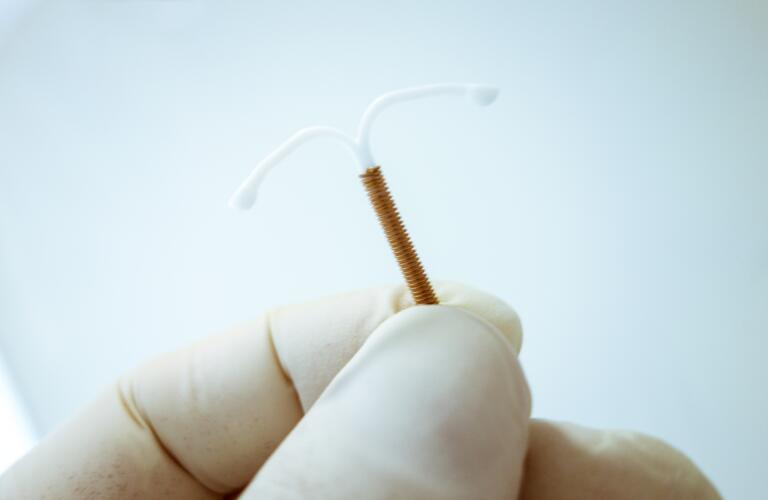Bleeding After Iud Removal Can I Get Pregnant

An intrauterine device (IUD) is a long-acting form of birth control that can remain in your uterus and provide reliable contraception for as long as 10 years, depending on the type of IUD you have. However, you can have your IUD removed any time you'd like, for any reason. You may be ready to become pregnant, would like to switch to another form of birth control, or are experiencing undesirable side effects from your IUD.
IUD removal is generally a quick and simple procedure, with few or no side effects. Here's what you can expect after your IUD is removed.
IUD Removal
IUD removal is a job for a healthcare professional. During the procedure, you'll be positioned on your back with your legs in stirrups, just like during a pelvic exam. Your healthcare provider will insert a speculum into your vagina so she can spot your IUD strings, which hang down from the device. The provider then uses a tool to grab hold of the strings and gently pulls. The "T" arms of the IUD fold in during removal, so the IUD can slip out through your cervix (the opening to your uterus) and vagina.
You may feel a bit of cramping as the IUD is removed, but typically, IUD removal is relatively painless.
In most cases, IUD removal takes less than 5 minutes.
Bleeding After IUD Removal
Some spotting or light bleeding is normal after IUD removal, so you may want to bring a pad or pantiliner along with you to your appointment. You can use pads, pantiliners or tampons as needed over the next few days for bleeding and spotting.
You should not experience heavy bleeding, pain or cramping after IUD removal. If you need to change your pad or tampon every hour or notice large clots, contact your healthcare provider. You should also let your provider know if you are experiencing pain or cramping that doesn't go away with over-the-counter pain medications (like acetaminophen or ibuprofen) or persists beyond the day of removal. A fever after IUD removal also warrants a call to the doctor.
Sex and Pregnancy After IUD Removal
You can resume your usual daily activities immediately after IUD removal, as long as you feel fine. You can have sex as soon as the day of IUD removal. However, you will not be protected from pregnancy unless you use another form of birth control. IUDs do not provide lingering contraception; once the IUD is out, you should assume you can get pregnant from unprotected sex.
It may take a while for your menstrual cycle to return to normal after IUD removal. If you had a hormonal IUD, your periods likely became lighter and shorter; you may have even stopped having a monthly period. Over approximately 3 months after IUD removal, your period will return to your baseline normal. Remember: You can get pregnant even if your period hasn't yet returned to normal.
If you had a copper IUD, your period might lighten a bit after IUD removal, as some women experience heavier periods when a copper IUD is in place.
You can begin trying to conceive as soon as your IUD is removed. Approximately 80 to 85% of women who want to conceive get pregnant within a year of IUD removal. If 6 months have passed and you are not yet pregnant, you may want to consult an Ob/Gyn or reproductive endocrinologist, especially if you are older than 35 years of age.
If you have additional questions about IUD removal and what to expect afterward, talk to your healthcare provider.
Bleeding After Iud Removal Can I Get Pregnant
Source: https://www.healthgrades.com/right-care/birth-control/what-to-expect-after-your-iud-is-removed